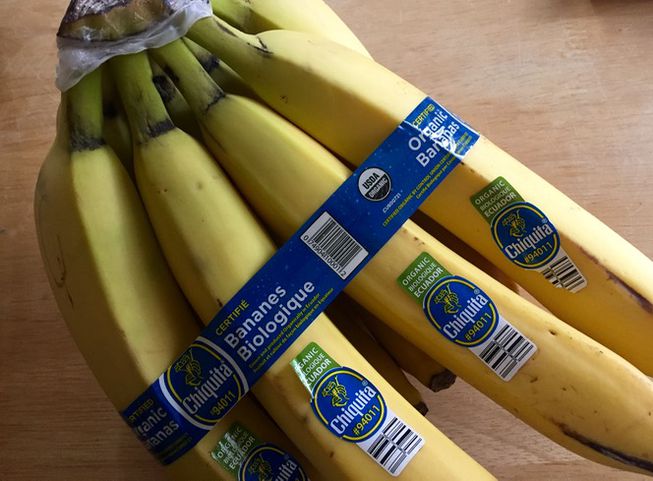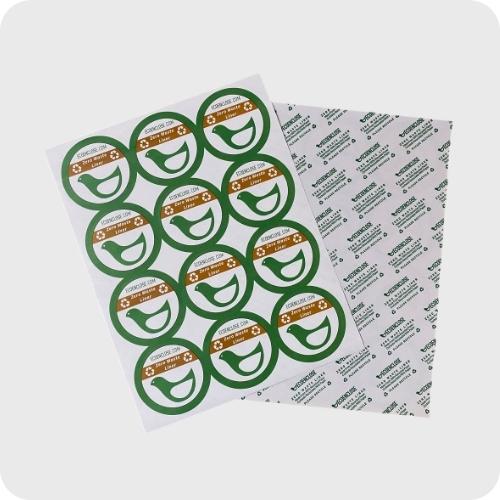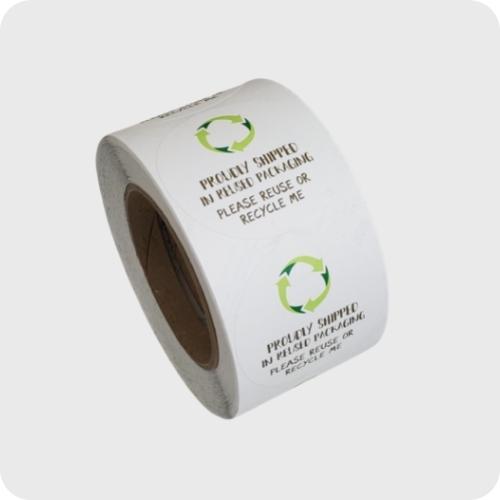Here’s What to do With Those Annoying Produce Stickers
Mục Lục
Here’s What to do With Those Annoying Produce Stickers
Raise your hand if you’ve accidentally eaten the little produce sticker on an apple?!
I’ve informally polled my friends, and every one of them has had a PLU sticker, or product lookup sticker, in their stomach. Unfortunately, the internet is awash with false claims about those PLU stickers, so we wanted to set the record straight on a few things that people often ask.
- By and large, these produce stickers are NOT biodegradable and must be removed before composting.
- Eating a PLU sticker won’t kill you, but it is not “edible,” and we advise against consuming it.
- PLU stickers are a bit of a supply chain marvel, however, we think the industry can better consider the end-of-life when designing them.
- The produce sticker (and the composting fiasco it can create) reminds us why we need to be careful to design for the optimal end-of-life.
Are produce stickers biodegradable?
Currently, the vast majority of produce stickers are still NOT biodegradable.
These stickers are typically made with a thin layer of plastic, most commonly vinyl (though occasionally paper is used).
The use of plastic as part of the sticker facestock is functionally important because it means the stickers can better withstand water, sprays, transit, and packaging as it moves from the producer to the shipper to the retailer.
But the use of vinyl and other thin plastic films means these stickers do not compost or biodegrade, and you should remove the sticker before composting.

Unfortunately, people often don’t know this (or forget!) – especially when the sticker is on the peel, as it is with citrus, avocados, and bananas.

Industrial composting facilities are happy to get our food waste. But, they struggle with the PLU sticker contamination issue.
Screening these stickers is time-consuming and challenging. Because of how tiny, thin and pliable they are, stickers will often get through the screens designed to catch them – leaving a sticky, plastic mess in the resulting compost.
According to Modern Farmer,
some companies single them out as the worst contaminant. It is alarming how much of this plastic is likely ending up in our soils through the composting process.
Unfortunately, PLU stickers also often end up as litter. For example, kids peel them off apples and toss them to the ground. Or they get stuck to clothes and shoes and eventually end up outside. Once they become litter, they will contaminate our waterways and lands forever (until, depressingly, they are ingested by marine life).
What should you do with the produce sticker?
First, peel off all of the PLU stickers as soon as you bring your groceries home before putting produce into your fridge or bin.
Then, make sure every single sticker ends up in the landfill-bound garbage.
Are you looking for an alternative to trashing these stickers?
Some have taken to
collecting them or creating art with them, which is pretty cool and creative!

Don’t eat produce stickers.
Let’s get this out of the way- don’t eat produce stickers. Of course, once you learn that these stickers are typically made of plastic, I imagine you aren’t inclined to want to eat them anyway, but it’s worth mentioning.
Because the internet has many claims that PLU stickers are made with “edible paper,” however, it is essential to emphasize this again: avoid ingesting produce stickers.
If you accidentally ingest a sticker on an apple, don’t panic. It will go through your body just fine, just like
chewing gum (also made of plastic). But don’t make it a habit of eating fruit stickers just because you can.
Where did the myth come from that these stickers are edible? PLU stickers are “FDA compliant,” but that does not make them edible. FDA compliant means a material is safe for direct food contact and that once the food and material are separated, there won’t be any residue from the material left on the food that could harm you. Sometimes referred to as “food contact substances (FCS),” this material is typically used to manufacture, package, transport, or store food.
Households nationwide use plastic wrap or baggies to store food, but they know not to eat the plastic wrap. This is the same thing!
What does the four digit code on fruit stickers mean?
If they’re so bad for composting, why do they put stickers on apples anyway? PLU stands for “Produce Look Up,” so the sticker tells each entity in the supply chain precisely what produce item it is. The International Federation of Produce Standards (IFPS) creates and manages this list, which currently has more than 1400 different codes. There is a unique PLU code for each specific variety of a produce item. For example, an organically grown Fuji apple has a different code from a conventionally grown Honeycrisp apple.
It doesn’t make sense for an individual to learn these different codes. But if you know a few tricks, PLU codes can help you as much as they are helping your checkout clerk. The three most important distinctions are:
- Organic produce has a five-digit PLU number and begins with the number 9.
- Conventional produce has a 4-digit PLU number that begins with the number 4.
- Genetically modified (GMO) produce has a five-digit PLU number that begins with the number 8.
- Stickers also indicate the country of origin, which can be helpful, especially for those looking to reduce their food miles.
PLU stickers are not the devil. They are chock full of information about our Global Produce Supply Chain. It is mind-blowing to think about how much essential information is captured on such a tiny little sticker and that producers and shippers worldwide follow the same standards.

Is there a better future for produce stickers?
We should all take steps to reduce the amount of trash sent to landfills and recycle wherever possible, but in the case of produce stickers, it’s best to take them off your fruit right away and send them to the landfill in the trash (for now). While many eco-conscious consumers are opting for a more locally-focused food lifestyle, the farmer’s market isn’t a viable option for many of us. A global supply of produce means that PLU codes and produce stickers are likely here to stay (and of tremendous benefit to retailers and consumers).
But the challenges these stickers pose for home and industrial composters signal that as households, communities, and countries are rethinking waste management and landfill diversion, we also need to redesign labels and packaging to align with the best possible end of life scenario for each item.
In other words, we need to
design all stickers more thoughtfully to align with the desired end-of-life of the sticker’s substrate.
For
EcoEnclose, given our focus on clean eCommerce packaging, this has always meant designing for recyclability, given that recycling is the most sustainable end-of-life scenario for non-food packaging.
For PLU stickers, the future should look different. Rather than thinking about recycling as the optimal end of life, we need to think about where we want our food and food waste to go.
The best end-of-life scenario for produce (and all food) is composting. So any item
placed on food should also be designed for compostability. Because of the growing number of home composting households, it would be ideal for these stickers to be developed for home compostability. Designing produce stickers this way is, unfortunately, difficult, given that compostable facestocks don’t withstand water and pressure as well as non-compostable plastic. However, it is starting to happen.
There are a handful of non-descript biodegradable, compostable fruit stickers around. Still, very few are certified as compostable, and there is no way for a consumer to distinguish between them and dispose of them properly.
However, some manufacturers are investing in game-changing sticker technology. For example, the Sinclair EcoLabel is an industrially compostable option out there that has been designed for high volume, highly automated processes that most producers will require – making it a truly viable alternative to the ubiquitous plastic sticker. Unfortunately, the Sinclair EcoLabel is over two times more expensive than a standard sticker today, which is difficult for many producers to take on. It is, however, a great start!
Even more exciting is industry innovation towards a sticker-less coding strategy, in which produce peels are
laser etched with their codes. We love this because the solution is inherently biodegradable, but it also means we don’t need to use materials for produce sticker facestock or release liners.
At EcoEnclose, we’re all about
sustainable packaging, and fruit happens to come “packaged” in compostable material already – just make sure you take the little sticker off first.
Looking for more information about eco-friendly stickers and labels?
EcoEnclose eco-friendly stickers are available on our unique
Zero Waste Release Liner that is recycled and recyclable. Check out our Definitive Guide to Custom Stickers where we break down the different parts of a sticker, why recycled content matters, and what it means to shop sustainably for stickers and labels.

Shop EcoEnclose Custom Stickers
100% post-consumer waste paper stickers are available on our unique Zero Waste liner that is 100% recycled and curbside recyclable.

Shop EcoEnclose Eco-Designed Stickers
Stock stickers in a variety of sustainable designs to convey your eco-friendly commitment. Available on our Zero Waste liner.






